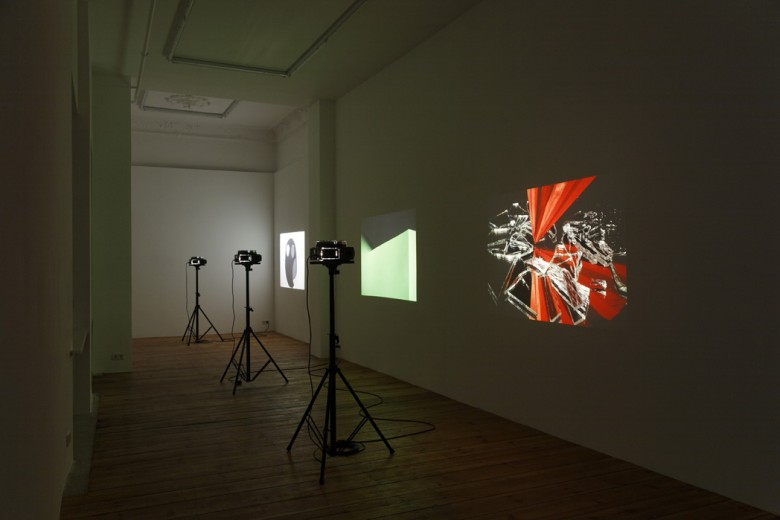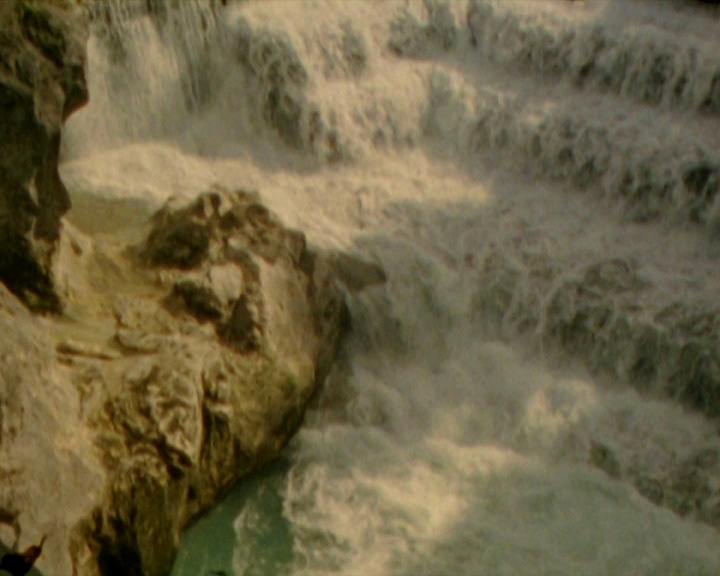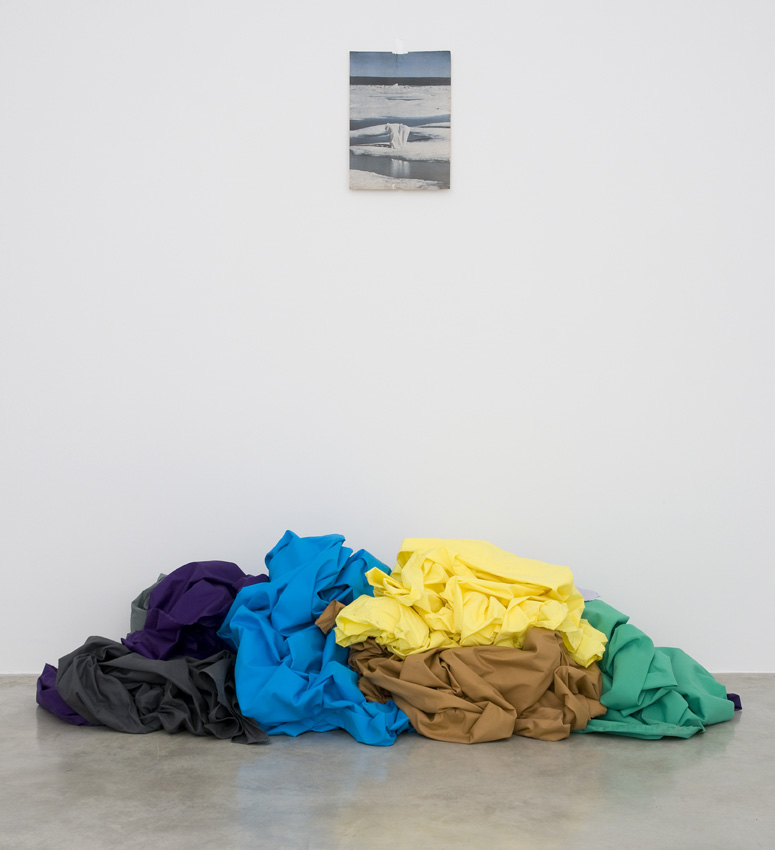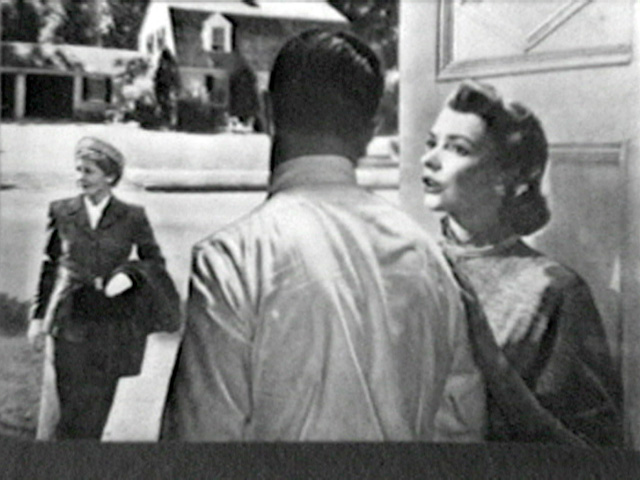BEYOND (Look at my face: my name is Might Have Been; I am also called No More, Too Late, Farewell)
Kumu Art Museum













Opening: 6 October at 5 pm
Time: 7 October 2011 – 8 January 2012
Venue: Kumu Art Museum (Weizenbergi 34 / Valge 1)
Address: Weizenbergi 34 / Valge 1, 10127 Tallinn
Contact phone: info tel. +372 602 6000
Ticket information: Museum ticket
Curator: Adam Budak
Artists: Helena Almeida, John Baldessari, Becky Beasely, Iñaki Bonillas, Stefan Burger, Miriam Böhm, Banu Cennetoglu, Sunah Choi, Haris Epaminonda, Dénes Farkas, Geoffrey Farmer, John Gerrard, Caroline Heider, Anette Kelm, Elad Lassry, Tatiana Lecomte, Christodoulos Panayiotou, Marlo Pascual, Alexandre Singh
NB! 7 October 2011: Lecture by Liz Wells (editor of A Photography Reader), followed by a panel discussion, moderated by Adam Budak, the curator of the exhibition
Look at my face: my name is Might Have Been; I am also called No More, Too Late, Farewell, as Edgar Auber phrased his, according to Giorgio Agamben, pretentious dedication on the back of his photograph, given to Marcel Proust. Appropriated from Dante Gabriel Rossetti’s sonnet, The House of Life, this memorable dedication became the leitmotif of Proust’s life, a guideline that hunted the writer, a synonym of love, memory and remembrance, as well as an evidence of Proust’s authentic passion for photography. Following the promiscuous life of pictures, the exhibition BEYOND refers to Auber’s dedication and considers it as a unique definition of photography, which contains reflection upon time and its fragmentation, performance and its exigency, as well as distance and its gesture of separation.
BEYOND (Look at my face: my name is Might Have Been; I am also called No More, Too Late, Farewell.) is foregrounding a self-reflexive nature of the photographic medium and its current condition, as well as the photography’s conditionality and exigency (which Agemben calls “a demand for redemption“, or what he perceives as an agent of the „real that is always in the process of being lost, in order to render it possible once again“). What makes photography possible; what makes it work, being useful and acting in a relational way; how photography continuously contributes to the architecture of the image and goes BEYOND (it); what makes photography speak; what is gestural about it; how to go BEYOND the medium or move AROUND while simultaneously remaining within the photographic discourse?
BEYOND, as an assemblage of photography-based work, first of all, focuses on artistic positions that are concerned with the use(s) of photography, as well as those that are interested in the broader notion of the medium in the expanded field, marked by blurred borderlines between other forms of expression and escaping categories, seducing senses, other provoking story-lines. Furthermore, the behaviour of a photographic image is being here analysed and the photography considered as a spatial practice is in focus. Conditions such as in-between, beyond, or parallel to and more than are essential for this show, which concentrates on subversive and critical approaches to image production, and the status of photography as a medium, exposed to manipulation and abuse. Artists’ usage of image is an illuminating on-going process of questioning image’s ontological stability. Oscillating between appropriation and an original, illusion of a movement and suspense, flatness and three-dimensionality, it generates a new – not yet defined – quality of perception that requests spontaneity, as well as a certain gesture of implied improvisation from viewer. In majority of cases, it is a highly performative proposition where the non-existing movement, in fact, is a movement of a performance.
BEYOND departs from one of the most beautiful essays ever written about photography, “Judgement Day” by Giorgio Agamben (included in his collection of essays, Profanations) where photography gains a mission of “capturing the Last Judgement”. It represents the world as it appears on the last day, the Day of Wrath when „everything that happens“ is called forth, summoned to appear on Judgement Day. Agamben analyses the relationship between gesture and photography. For him, the photograph is always more than an image: “It is the site of a gap, a sublime breach between the sensible and the intelligible, between copy and reality, between a memory and a hope.” While embracing the formal and the narrative and acting as an interruption, or a rupture, or a break, this exhibition’s ambition is to map such a breach.
BEYOND takes into consideration cross-photographic positions, such as Geoffrey Farmer’s image theatrics (installation/sculpture/photography), or Helena Almeida’s photographic self-portraiture (performance/drawing/painting/photography), or John Gerrard’s animated architecture of vision (video/photography/light box), or Elad Lassry’s uncanny subjects’ mise en scène (object/film/photography). Other artists of the exhibition, such as Becky Beasley, Haris Epaminonda, Stefan Burger, Alexandre Singh, Banu Cennetoglu, Marlo Pascual, Christodoulos Panayiotou, Iñaki Bonillas Anette Kelm, Sunah Choi, Miriam Böhm, Tatiana Lecomte and Caroline Heider contribute to the notion of a photography, perceived as a spatial, performative and self-reflexive, post-conceptual practice. The newly produced, side-specific installation by Dénes Farkas frames and animates the exhibition space, recalling a photographic process of reality’s duplication, while early films by John Baldessari (including Art Disaster, 1971, and Ed Henderson Suggests Sound Tracks for Photographs, 1974) negotiate the photography’s form and meaning.
Helena Almeida (1934) was born in Lisbon, she lives and works in Lisbon. She studied Painting at the Escola Superior de Belas-Artes in Lisbon.
Over the last forty years, Almeida has combined painting, photographic imagery, performance and drawing to explore intimacy, sensation and the limits of the body. Although Almeida always uses herself as model, she insists that her images are not self-portraits. In her photographs, she assumes positions that she has painstakingly choreographed in order to create complex visual compositions that are about space and line, as well as the relationship between the artist and the image. Sometimes she adds to these compositions by painting directly onto the photographs in bold primary blue or red or adding sculptural 3D elements.
Almeida has been exhibiting regularly around the world since 1960. She has represented Portugal twice at the Venice Biennial, in 1982 and 2005.
John Baldessari (1931) was born in National City, California. He received a BA and an MA from San Diego State University and also studied at U.C. Berkeley, UCLA, Otis Art Institute and Chouinard Art Institute.
He was awarded an Honorary Doctorate from San Diego State University in 2003 and in 2004 was elected to the American Academy of Arts and Sciences. The recipient of a Guggenheim Fellowship in 1986 and grants from the National Endowment for the Arts, he was also awarded the Oscar Kokoschka Prize and the California Governor’s Award for Lifetime Achievement in the Visual Arts. He has taught at the Southwestern University, California; the University of California at San Diego; and the California Institute of the Arts, Valencia.
His work has been exhibited internationally at one person shows at the Stedelijk Museum, Amsterdam; Sonnabend Gallery, New York; Museum Folkwang, Essen, Germany; Contemporary Arts Museum, Houston; Santa Barbara Museum of Art, California, and Museo Nacional Centro de Arte Reina Sofía, Madrid, among other institutions; and in group shows at the Contemporary Arts Museum, Houston; Documentas 4,5 and 6, Kassel, Germany; Venice Bienale; Palais des Beaux Arts, Brussels; Everson Museum of Art, Syracuse; The Museum of Modern Art, New York; Kolnischer Kunstverein, Cologne; and the Whitney Museum of American Art Biennial, New York, among others.
www.baldessari.org
Becky Beasely (1975) was born in the UK, she lives and works in St Leonards on Sea, England. She received her BA from the Goldsmiths College, London (Fine Art/Art History, 1999) and MA from the Royal College of Art (Photography, 2002).
While Beasley’s primary media are photography and sculpture, her work is deeply informed by a relationship to language. Aesthetically she engages in a questioning of the relations between handmade, often wooden, objects and their (re-)presentation as photographs, in which her objects are regularly the subject. Her subject matter is composed of the personal and art historical, often mediated through literary references. Her sculptures have been described as mental objects and this intended double meaning ideally suits the precise and playful use of conceptual strategies embedded within intensely assembled objects.
Her selected solo exhibitions include: UBU Gallery, Glasgow (2006); Office Baroque, Antwerp (2009); Laura Bartlett Gallery, London (2009) and Serpentine Gallery Pavilion, London (2010). Beasley’s group exhibitions include: Kunsthalle Basel, Basel (2008); MACBA, Barcelona (2009); New Galerie de France, Paris (2009); Locust Projects, Miami (2010).
www.beckybeasley.com
Iñaki Bonillas (1981) was born in Mexico City, he lives and works in the same city.
Since the late nineties, Iñaki Bonillas has established a deep relationship with photography in his work. With a regard for the aesthetics and the conceptual practices of the sixties and seventies, Iñaki Bonillas has been gradually isolating the constituent elements of photography and connecting them with other procedures. In 2003 Bonillas introduced the vast photo archives of his grandfather, J. R. Plaza, into his work. He links elements together that are a priori incompatible: on the one hand a personal, biographical narrative that consists of private anecdotes and emotions, and on the other a quasi-scientific element of compilation, classifying, and archiving.
His work has been shown recently in various exhibitions such as The Expression of the Emotions in Men and Animals, Hermes und der Pfau, Stuttgart; El mal de escritura, MACBA, Barcelona; Protective Coloration, Bard College, New York, and Little Theater of Gestures, Museum für Gegenwartskunst, Basel and Malmö Konsthall. His work was also presented at last year’s Art Statements / Art Basel. Iñaki Bonillas is represented by ProjecteSD, Barcelona, Galerie Greta Meert, Brussels, and Galería OMR, Mexico City.
Adam Budak (1966) is curator for contemporary art at Kunsthaus Graz (Austria) and elsewhere. He studied Theatre Studies at the Jagiellonian University in Krakow and History and Philosophy of Art and Architecture at the Central European University in Prague.
Budak is the author of a large number of solo and group shows, co-curator of, amongst others, Manifesta7, Polish Pavillion in 9th Venice Architecture Biennale and Prague Biennales. Budak is a co-founder of the postgraduate studies in curatorial practice and
theory at the Art History Institute of the Jagiellonian University, Krakow (Poland).
His curatorial practice is located on the cross-way of spatial forms and the performative arts.
Stefan Burger (1977) was born in Germany, he lives and works in Zürich. Burger received his MA from in Photography from the University of Art and Design, Zürich (2003).
Burger is interested in scenes that show the process of construction, the scaffolding and the supports. He exposes mechanisms: mechanisms of perception, production and operation. His quest leads him to the circumstances of the world, the movement backstage and the unfolding scenes.
Selected solo exhibitions include Marion Scharmann in Cologne, Kunsthaus Baselland in Basel and Kunstmuseum in Thun. Selected group exhibitions include Artnews Projects in Berlin, Kunsthaus Zürich, Düsseldorf Contemporary with Freymond-Guth & Co and Centre d’Art in Biel.
stefanburger.ch
Miriam Böhm (1972) lives and works in Berlin. She has studied at the Academy of Art, Vienna and at the Rijksakademie van Beeldende Kunsten, Amsterdam.
The photographs of Miriam Böhm often contain images within images where shifting perspectives within a single frame fuse representation with pictorial illusion. Each study is meticulously crafted and photographed, cut and arranged and re-photographed, resulting in a picture where still-life, landscape, background and foreground all exchange roles. Through a documentarian’s lens, she takes common motifs – landscape, architecture, or plants, in addition to backdrop materials like cardboard, marble and fabric – and creates painterly tableaux that reveal the limitations of perception.
She has presented her work throughout Europe and the United States, including exhibitions at Ratio 3, San Francisco; White Cube, Berlin; and Harris Lieberman, New York. Her work is included in the permanent collections of the San Francisco Museum of Modern Art and the Museum of Modern Art, New York.
Banu Cennetoglu (1970) lives and works in Istanbul. She has studied Psychology (BA) and later Photography in Paris. In 2002–2003, she was an artist in residence at the Rijksakademie, Amsterdam.
She works with photography, installation and printed material. In 2006, she initiated BAS, a project space in Istanbul, focusing on collection and production of artists’ books and printed matter.
Her recent exhibitions include Guilty Feet Have Got No Rhythm, Kunsthalle, Basel; Sample Sale – 2010 BC, Rodeo, Istanbul; the 53rd Venice Biennial, the Pavilion of Turkey (with Ahmet Ogut); the 10th Istanbul Biennial and the 1st Athens Biennial.
www.banucennetoglu.com
Sunah Choi (1968) was born in Korea, she lives and works in Berlin. She has studied at the Staatliche Hochschule für Bildende Künste in Frankfurt (MFA, 2001) and at the Slade School of Fine Art in London (2000).
Sunah Choi works with photography, as well as sculpture, video and installation. Her work deals a lot with the notion of chance and is based on a debate around processes of cultural appropriation.
She explores the appearance of material as form and the way that forms appear. Choi creates compositions and arrangements of forms that have relationships to the particular aesthetics and content with which they are imbued. Her installations are often based on an examination of materials and compositions of objects, which are transferred into different dimensions (through subtle interventions).
Since 1999, she has had over ten solo exhibitions in Germany, Switzerland and Korea. She has participated in many group exhibitions all over the world: in Europe, Japan, USA and Korea.
www.sunahchoi.com
Haris Epaminonda (1980) was born in Nicosia, Cyprus and now works and lives in Berlin. In 2007, she co-represented Cyprus at the 52nd Venice Biennale and in 2009, she took part at the 9th Sharjah Biennale, as well as the 5th Berlin Biennale in 2008.
Her recent and upcoming solo exhibitions include: Museum Of Modern Art, New York (2011), Schirn Kunsthalle, Frankfurt Au Main (2011), Museo di Palazzo Poggi &
Biblioteca Universitaria, Bologna (2010), Level 2 Gallery, Tate Modern, London, UK (2010), Site Gallery, Sheffield, UK (2010), Rodeo, Istanbul (2009), Malmö Konsthall, Malmö, Sweden (2009), Circus, Berlin (2008) and Künstlerhaus Bethanien, Berlin (2008). Since 2007, Epaminonda is developing, together with Daniel Gustav Cramer, The Infinite Library – an ongoing book project.
www.harisepaminonda.com
Dénes Farkas (1974) was born in Budapest, he lives and works in Estonia. He graduated from the Graphic Arts at the Estonian Academy of Arts (BA, 2001) and the Department of Photography (MA, 2003).
Dénes Farkas mainly uses photography and installation. Above all, his works are related to the structure of society, analysing the social and political issues.
Since 1998, he has been involved in personal and group exhibitions both in Estonia and elsewhere in Europe.
Between 2005–2009, Dénes Farkas worked in the Photography Department of the Estonian Academy of Arts as an associate professor. Since 2009, he works there as a lecturer.
www.denesfarkas.com
Geoffrey Farmer (1967) was born in Eagle Island, British Columbia, he lives and works in Vancouver. He attended the San Francisco Institute of Art (1991–1992) and the Emily Carr Institute of Art and Design (BFA 1993).
Farmer’s research-based projects result in multi-media installations that combine video, film, performance, drawing, sculpture, found objects and texts. He has developed a rigorous practice with a strong interest in process, transformation and theatricality, including storytelling, staging, improvisation and the fabrication of reality.
His recent solo exhibitions include: Geoffrey Farmer (2008), Musée d’art contemporain de Montréal; The Last Two Million Years (2007), The Drawing Room, London; Pale Fire Freedom Machine (2005), Power Plant Gallery, Toronto; The World as a Stage (2007), Tate Modern, London, and ICA Boston (2008); Gasoline Rainbows (2007), Contemporary Art Gallery, Vancouver (2007); Classified Materials (2005), Vancouver Art Gallery; and Intertidal: Vancouver Art & Artists (2005), MuHKA, Antwerp.
John Gerrard (1974) was born in Dublin, he lives and works in Dublin and Vienna. He has studied at The Ruskin School of Drawing and Fine Art in Oxford University (BFA in Sculpture, 1997). He received MFA degree from The School of the Art Institute of Chicago (2000) and MSc from the Trinity College in Dublin (2001). He was awarded an artist’s residency at the Ars Electronica Futurelab in Linz in 2002.
In Linz, Gerrard began working in the medium of real-time 3D, using advanced programming, originally developed for military simulation, to create artworks that combine aspects of painting, drawing, sculpture, photography and cinema.
John Gerrard has been the subject of recent solo exhibitions at the Scottish National Gallery of Modern Art in Edinburgh, the Hirshhorn Museum and Sculpture Garden in Washington, DC and the Perth Institute of Contemporary Arts, Australia. In July 2011, his major new work, Infinite Freedom Exercise, was installed in Lincoln Square in Manchester as part of the Manchester International Festival.
www.johngerrard.net
Caroline Heider (1978) was born in Munich, she lives and works in Vienna. She has studied at the University of Music and Performing Arts Vienna (2001–2008), at the Academy of Fine Arts Vienna (Photography and Fine Art, 2003–2009) and at the Glasgow School of Art (Sculpture and Environmental Art, 2007).
Caroline Heider bases her work on existing pictures, on a public world of images, which is conveyed for example in magazines. The artist’s interests focus on the social and cultural context of the pictures. She examines the question of how pictures function in the context of artistic production. Caroline Heider adopts strange pictures for her works, she removes them from their contexts and reproduces and processes them.
Her recent solo exhibitions include: Relax – the universe will guide your life, Artothek, Munich (2011) and Along the lines, Gallery Winiarzyk, Vienna (2010). And her recent group exhibitions include: Körper Codes. Menschenbilder aus der Sammlung, Museum Moderner Kunst Salzburg, Salzburg; Linz Triennale 1.0, Landesgalerie Linz am oberösterreichischen Landesmuseum, Linz; Photobiennale RU, State Art Museum Novosibirsk, Russia; Expedit 11, Werkstadt Graz, Graz (all 2010).
Annette Kelm (1975) was born in Stuttgart, she lives and works in Berlin.
Annette Kelm photographs still life, portraits, objects, architecture and landscape. Her works are distinguished by a clear, reduced and matter-of-fact metonymy. Many of her photographs hold a moment of timelessness and are without space but focused on the present moment of the staged subject and its form and structure.
Kelm had her first solo exhibition in 1999, since then her works have been shown all over the world in USA, Europe, South-Korea and Japan. Her recent group exhibitions include: ILLUMInazioni/ILLUMInations, La Biennale di Venezia, 54. Esposizione Internazionale d’Arte, Venice; Strictly global!, Taunusanlage Frankfurt am Main, Kunstverein Bonn, Germany; The Anxiety of Photography, Aspen Art Museum, USA (all 2011); How Soon is Now, Garage Center for Contemporary Culture, Moscow; TRUST, Media City Seoul, The 6th biennale, Seoul, South Korea (both 2010).
Elad Lassry (1977) was born in Tel Aviv, she lives and works in Los Angeles. Lassry received his BFA from the California Institute of the Arts in 2003 and his MFA from the University of Southern California in 2007.
Lassry engages traditions of story-building with images and the ghosts of history that persist in images long after they have been lifted out of their original contexts. Lassry’s works mimic commercial photography. Yet the shots that may at first seem the most direct are complicated by double exposures, an occasional blur, or the superimposition of multiple negatives.
His recent solo exhibitions include: Sum of Limited Views, Contemporary Art Museum, St. Louis, MO; Kunsthalle Zurich (both 2010); Elad Lassry: Three Films, Whitney Museum of American Art, New York, NY (2009). Recent group exhibitions: ILLUMInations, curated by Bice Curiger, International Pavilion, 54th Venice Biennale; Deutsche Börse Photography Prize 2011, The Photographers’ Gallery, London; New Photography 2010, Museum of Modern Art, New York; Dance with Camera, Contemporary Arts Museum, Houston, TX (2010).
Tatiana Lecomte (1971) was born in Bordeaux, she lives and works in Vienna. She has studied at the Gerrit Rietveld Academie, Amsterdam (1998–2000) and the University of Applied Arts, Vienna (1995–2002).
The central theme in her work is the historical and/or media influenced importance of certain places or sites and the im/possibility of portraying these photographically.
Her selected solo exhibitions include: Ersatz, Jesuiten Foyer, Vienna (2007); Scriptures Without Words, Galerie Stadtpark, Krems (2009); Wien 5. (Arbeitstitel), Weisse Haus, Vienna (2011). Selected group exhibitions include: Photo Graz 06: a selection, Photon Association, Ljubljana (2007); Oral Landscape, Landesgalerie Linz (2008); Triennale Linz 1.0, Contemporary Art in Austria, Linz (2010); Nichts verschenken, alles nutzen, FLUC, Vienna (2010).
www.lecomte.mur.at
Christodoulos Panayiotou (1978) was born in Cyprus, he lives and works in Berlin. He originally studied dance, theatre and anthropology, his work is formed in a range of media incorporating video, photography, slide projections and installations.
Christodolous Panayotou’s works are structured in thematic circles which often function in chapters open to rearrangements. Part of his visual language becomes a manifestation that renegotiates the historical and political narrative, concentrating on the undefined desires and projections of identity dealing with its existential quest. He is interested in both the individual as well as the collective.
His recent solo exhibitions include: Christodoulos Panayiotou, Museum of Contemporary Art, Leipzig (2011); Christodoulos Panayiotou, Kunsthalle Zürich, Zürich and Christodoulos Panayiotou, Cubitt, London (both 2010). Recent group exhibitions include: You are not alone, Joan Miro Foundation, Barcelona; Based in Berlin, Neuer Berliner Kunstverein, Berlin; The End of Money, Witte de With, Rotterdam and I Know Something About Love, Parasol Unit, London (2011).
www.christodoulospanayiotou.com
Marlo Pascual (1972) was born in Nashville, Tennessee, he lives and works in New York. She received her BA from the University of Tennessee (1994) and MFA from the Tyler School of Art, Philadelphia (2007).
Marlo Pascual uses found imagery and film as a point of departure in her work, creating photo-based sculptures, installations and images that reference movements, such as Conceptual Art, Surrealism, Minimalism and Arte Povera. Frequently finding her source material at second-hand stores, which she scours for head shots, soft-core porn, and film stills, Pascual reinvents the images as sculptural objects.
Pascual has participated in group shows at the Sculpture Center in New York, the Garage in Moscow, the Hessel Museum of Art at Bard College, 303 Gallery in New York and Galerie des Galeríes in Paris. Her first solo museum exhibition was exhibited at the Aspen Art Museum.
Alexander Singh (1980) was born in Bordeaux, he lives and works in New York. He has studied at the Ruskin School of Drawing and Fine Art in Oxford University (1998–2001), School of Visual Arts in New York (2003–2005) and at the Skowhegan School of Painting and Sculpture in Maine (2006).
Alexandre Singh explores a variety of media and exhibition formats, working in literature, collages, installations and performances. His works often combine elements of reality with fiction, reassessing historical and narrative conventions and questioning systems of knowledge and interpretation.
Since 2007, Alexander Singh has had solo exhibitions in New York, Lisbon, Rome, San Francisco, Paris and Berlin. Since 2001, he has been participating in numerous group exhibitions in USA, Hong Kong and Europe. He has given performances all over the world.
He is an author of the novel The Marque of the Third Stripe (2007) and numerous other short stories.
Opening
6 October 2011, at 17:00
7 October 2011 – 8 January 2012
PlaceAddressWeizenbergi 34, Tallinn
AdmissionMuseum ticket
More info+372 6 026 000
CuratorsAdam Budak
ArtistsHelena Almeida, John Baldessari, Becky Beasely, Iñaki Bonillas, Stefan Burger, Miriam Böhm, Banu Cennetoglu, Sunah Choi, Haris Epaminonda, Dénes Farkas, Geoffrey Farmer, John Gerrard, Caroline Heider, Anette Kelm, Elad Lassry, Tatiana Lecomte, Christodoulos Panayiotou, Marlo Pascual, Alexandre Singh